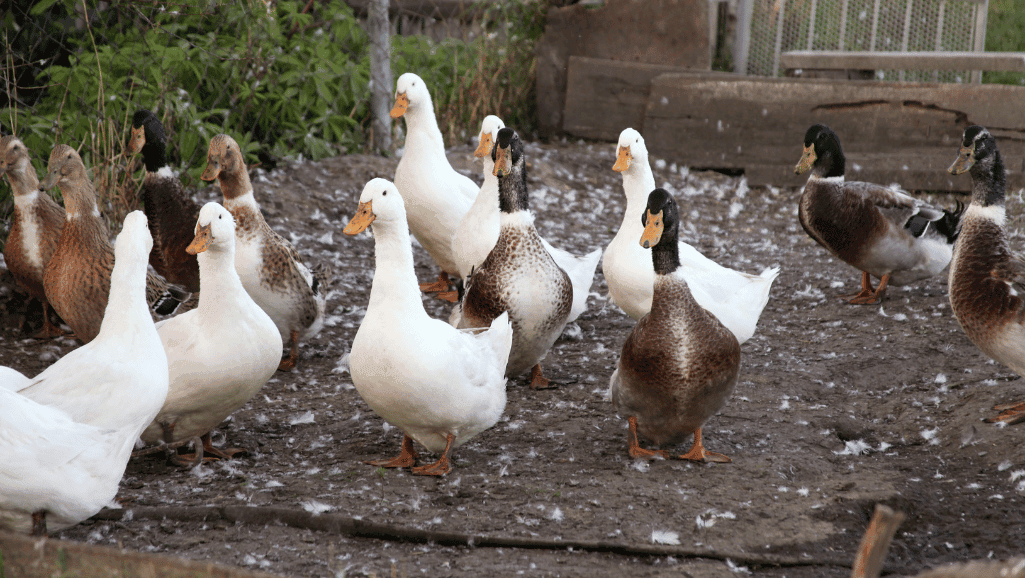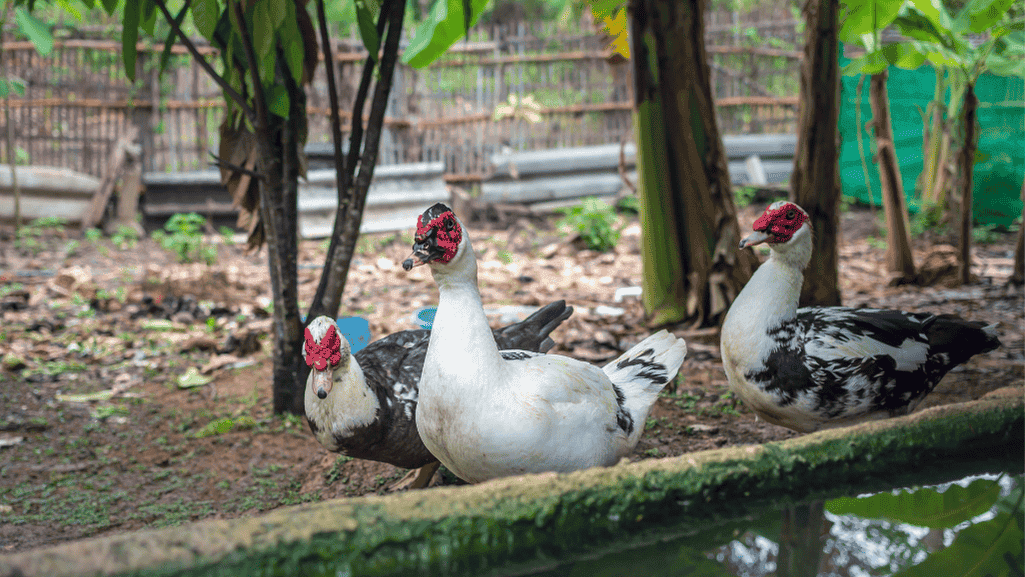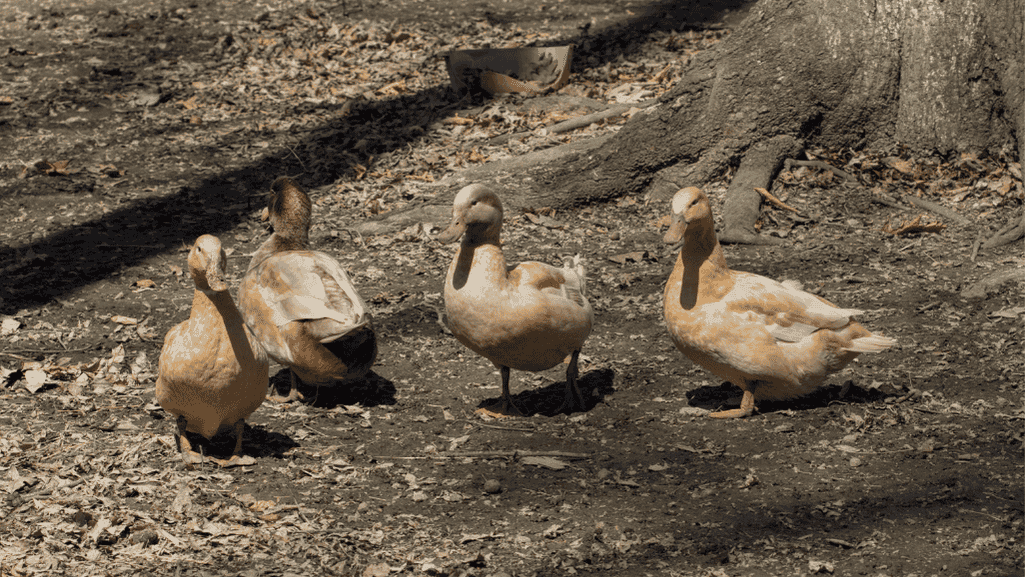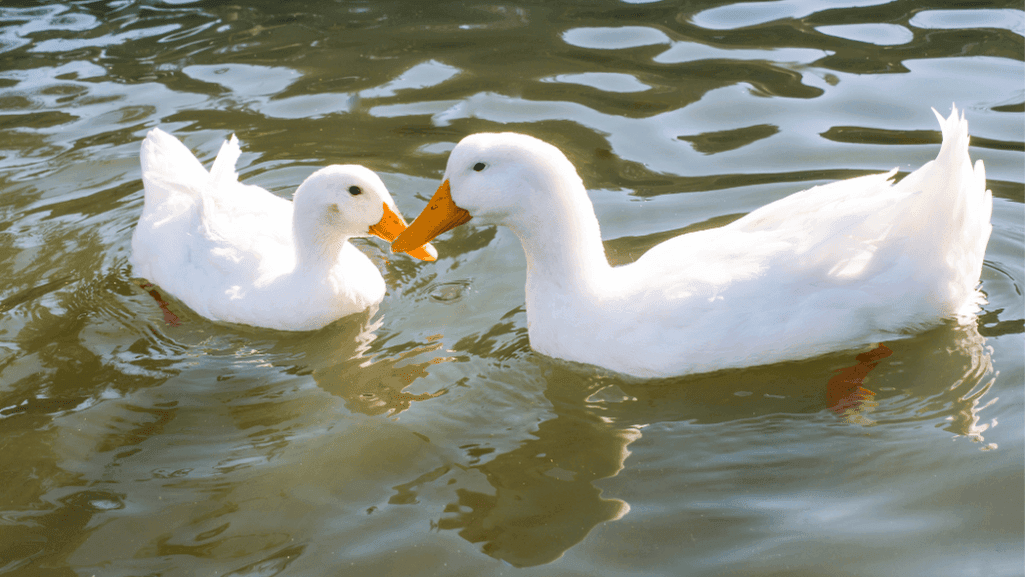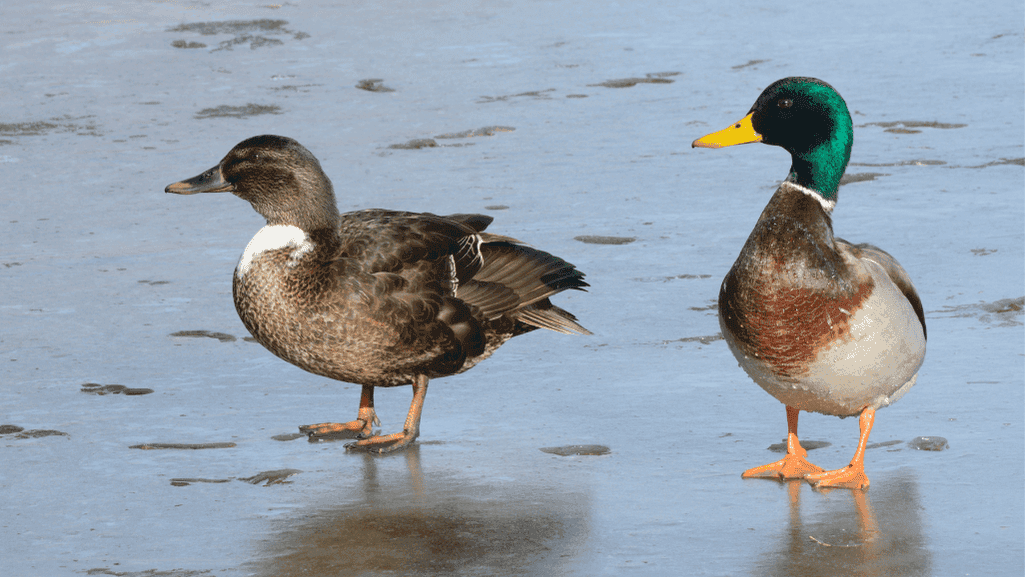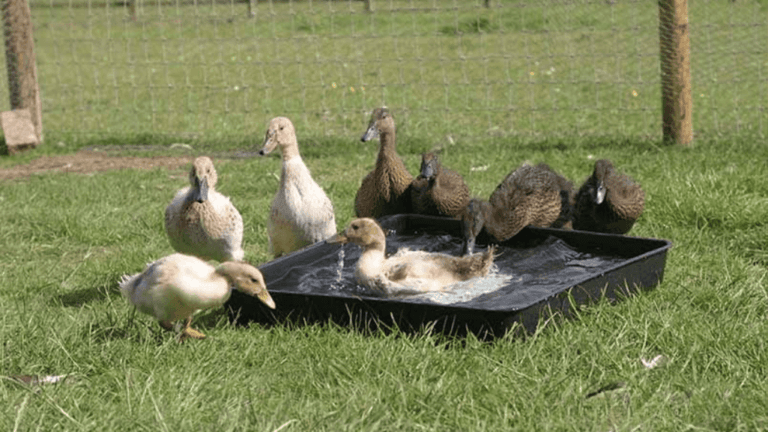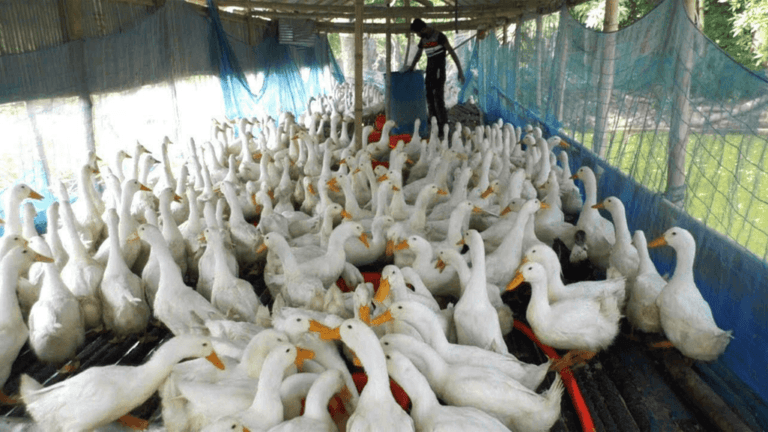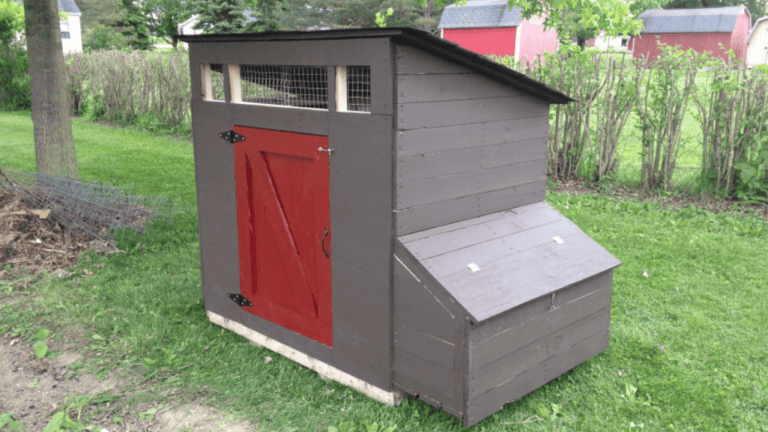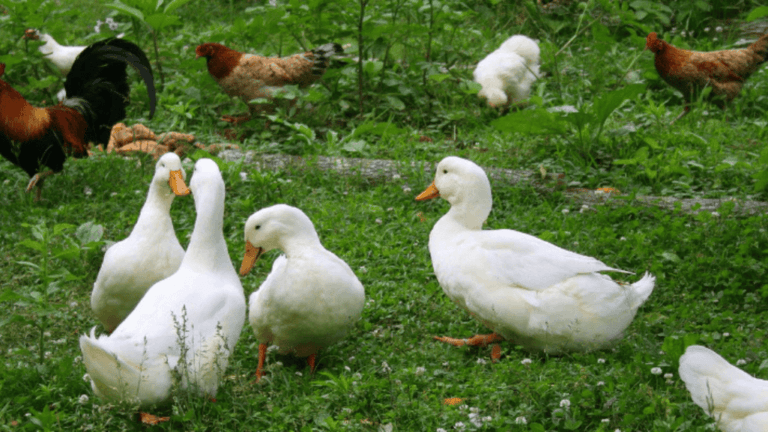Backyard duck keeping is getting more popular, with over 25 breeds to choose from. These ducks are not just pets; they are also useful for small farms. They come in many breeds, each with its own special traits.
Standard domestic breed ducks vary in size, color, and purpose. If you want lots of eggs, the Campbell duck is a good choice. It lays 5-6 eggs a week. For something smaller and more colorful, the Call duck is perfect.
Pet ducks are more than just friends. They help control pests, give eggs, and even cut the grass. The Pekin duck is America’s favorite and is used in most domestic duck meat production.
Key Takeaways
- Over 25 domestic duck breeds are available for backyard keeping
- Pekin ducks are the most popular breed in America
- Some breeds, like Cayuga and Buff Orpington, are listed as threatened
- Duck breeds vary in egg production, from 30 to 300 eggs per year
- Ducks can serve multiple purposes: pets, egg layers, and pest control
Introduction to Domestic Duck Breeds
Raising ducks is becoming a popular hobby in waterfowl farming. There are many breeds of domestic ducks, each with its own special traits. They are perfect for different needs in poultry farming, from the common Mallard to the unique Muscovy.
The Rise of Backyard Duck Keeping
More people are keeping ducks in their backyards as an alternative to chickens. Duck care is growing in popularity, thanks to the wide variety of duck breeds available. The American Poultry Association lists 17 duck breeds, divided into heavy, medium, lightweight, and bantam classes.
Benefits of Raising Ducks as Pets
Raising ducks has many advantages. They help control pests, provide nutritious eggs, and make great companions. Some breeds, like the Indian Runner, can lay over 300 eggs a year. Ducks are tough birds that resist many diseases, making them perfect for both new and experienced owners.
Overview of Duck Breed Diversity
There is a wide range of domestic duck breeds. You can find everything from the White Pekin for meat to the Khaki Campbell for eggs. Here’s a look at how many eggs some popular breeds lay:
| Breed | Eggs per Year |
|---|---|
| Khaki Campbell | 250-300+ |
| Indian Runner | 200 |
| Pekin | 140 |
| Muscovy | 150 |
This variety in duck breeds lets people pick the best one for their needs. Whether it’s for eggs, meat, or just as pets, there’s a duck for everyone.
Understanding the Mallard: The Ancestor of Most Domestic Ducks
Mallard ducks are key to many domestic duck breeds. They are small and agile in flight, laying greenish eggs. In many places, it’s illegal to take them from the wild.
Domestic mallards need special marks to tell them apart from wild ones. They are mostly kept for decoration or to train hunting dogs. Their ability to adapt has made them a big part of duck diversity.
Mallards show unique behavior. They are dabbling ducks, filtering water and food through their bills. They eat aquatic plants, seeds, larvae, and insects.
| Characteristic | Male Mallard | Female Mallard |
|---|---|---|
| Bill Color | Yellowish with black tip | Orange with black on top |
| Distinctive Features | Green specks on head, chestnut chest | Mottled brown plumage |
| Tail Feathers | Slight curl | Straight |
In summer molt, both sexes show eclipse plumage, looking alike. This helps them during their flightless period. Mallards lay about a dozen eggs at a time, helping their numbers grow.
Pekin Ducks: The Classic White Duck
Pekin ducks are the top choice for many in the U.S. They are big, white, and loved by both backyard keepers and large-scale farmers. These ducks are great for making duck eggs and meat.
Characteristics and Popularity
Pekin ducks are big and grow fast. Males can get up to 4.5 kg (10 lb), and females up to 4.1 kg (9 lb). They can reach over 3.5 kg (8 lb) in just seven weeks, perfect for meat production. In the U.S., over 95% of duck meat comes from Pekin ducks.
Egg-laying Capabilities
Pekin ducks are also good at laying eggs, not just for meat. They can lay 150 to 200 white eggs a year. Some can even lay up to 300 eggs annually. This makes them popular with backyard duck keepers.
Suitability as Backyard Pets
Pekin ducks are great pets because they are friendly and easy to get along with. They look nice with their white feathers and big size. But, they need a lot of space and can be loud. With the right care, they can be a fun part of your backyard.
| Characteristic | Value |
|---|---|
| Average Male Weight | 4.5 kg (10 lb) |
| Average Female Weight | 4.1 kg (9 lb) |
| Annual Egg Production | 150-200 eggs |
| U.S. Meat Production Share | Over 95% |
| Growth Rate | 3.5 kg in 7 weeks |
Muscovy Ducks: A Unique Breed Apart
Muscovy ducks are a special type of waterfowl. They come from Mexico, Central, and South America. People living there before Europeans arrived domesticated them for their meat and eggs.
These ducks are big, with males weighing 10 to 15 pounds and females 6 to 11 pounds. They have red, fleshy parts around their eyes and beak, especially in males. You can find them in white, black, blue, chocolate, and lavender colors.
Muscovy ducks are quiet and perfect for places where noise is a concern. They are smart, curious, and friendly. These traits make them great for sustainable farming.
They are great for small farms. Muscovy ducks lay 60 to 150 big eggs every year, starting at 4-6 months old. Their eggs take 35 days to hatch, which is longer than many other ducks. The meat is lean, with over 98% fat-free protein.
| Characteristic | Details |
|---|---|
| Primary Use | Meat & Eggs |
| Body Type | Heavy |
| Egg Production (Annual) | 60 to 150 |
| Egg Color | Cream or white, often tinted light green |
| Conservation Status | Least concern |
Muscovy ducks are great at controlling pests by eating flies, mosquitos, and other bugs. This helps farmers use fewer chemicals. Their ability to adapt and their special traits make them a valuable part of many farms.
Cayuga Ducks: The American Beauty
Cayuga ducks are known for their beautiful look and American roots. They come from near Cayuga Lake in New York. Their feathers shine with a green glow in the sun.
Origin and Appearance
Cayuga ducks are truly American, bred in the United States. They are medium-sized, with males weighing 7-8 pounds and females 5-6 pounds. Their feathers are glossy black, sometimes looking green in the right light.
Temperament and Care Requirements
Cayuga ducks are calm and make great pets. They can live in many climates, even in the tropics. These duck types need a safe, well-ventilated place and water. They lay 100-150 big eggs a year, with shells in shades of charcoal to light gray.
Conservation Status
The Livestock Conservancy says Cayuga ducks are at risk. In the 1870s, they were the most common duck in the U.S. Now, they’re mostly kept for showing or laying eggs.
| Characteristic | Details |
|---|---|
| Weight (Male) | 7-8 pounds |
| Weight (Female) | 5-6 pounds |
| Egg Production | 100-150 per year |
| Conservation Status | Threatened |
| Recognized By | American Poultry Association, British Poultry Standards |
Starting a small flock of Cayuga ducks is a good idea. They are easy to care for and useful for both beginners and experts in duck keeping.
Buff Orpington Ducks: Dual-Purpose Charm
Buff Orpington ducks are a favorite in backyard poultry. They come from Kent, England, and date back to the early 1900s. Their fawn buff feathers and brownish-orange bills make them stand out in any duck farming setup.
These ducks are great for both eggs and meat. Hens lay 200-250 large eggs every year, giving about 4-5 eggs a week. Their eggs are creamy beige to tan, sometimes with brown speckles. They are also valued for their meat, with hens weighing 6-8 pounds and roosters 8-12 pounds.
Buff Orpingtons are known for their friendly nature, making them perfect for beginners and families. They are calm and quiet, unlike some other ducks. Roosters are especially calm, rarely showing aggressive behavior.
| Characteristic | Description |
|---|---|
| Origin | United Kingdom |
| Egg Production | 200-250 eggs annually |
| Egg Color | Creamy beige to tan |
| Weight (Hen) | 6-8 pounds |
| Weight (Rooster) | 8-12 pounds |
These ducks are adaptable to different climates, doing well in both cold and heat. They are great for backyards, needing at least 4 square feet per bird inside and 8-10 square feet outside. They start laying eggs at 6-8 months and keep laying for years, making them a smart choice for duck lovers.
Standard Domestic Breed Ducks for Egg Production
Duck egg production is becoming more popular among poultry lovers. Many duck breeds are great at laying eggs, making them great for backyard flocks. Let’s look at some top egg-laying ducks that are well-known in the poultry world.
Khaki Campbell Ducks
Khaki Campbell ducks are famous for their egg-laying skills. These medium-sized ducks can lay up to 340 eggs a year. Their cream-colored eggs are a treat in any kitchen. Khaki Campbells are tough and fit well in different climates, making them perfect for backyard duck keepers.
Indian Runner Ducks
Indian Runner ducks are known for their upright stance. These ducks lay up to 365 eggs a year, which is as much as some chicken breeds. Their bluish-green eggs are loved by those who enjoy duck eggs. Runners are great foragers, keeping pests away from gardens.
Welsh Harlequin Ducks
Welsh Harlequin ducks are a newer breed recognized by the American Poultry Association. These beautiful ducks are good for both meat and eggs. Welsh Harlequins lay white or tinted eggs all year, making them valuable for duck egg production.
| Breed | Egg Color | Annual Egg Production |
|---|---|---|
| Khaki Campbell | Cream | Up to 340 |
| Indian Runner | Bluish-green | Up to 365 |
| Welsh Harlequin | White or tinted | 280-300 |
These egg-laying duck breeds give backyard poultry keepers a chance to diversify their flocks. They can enjoy a steady supply of nutritious duck eggs. Whether you want consistent layers or birds for multiple uses, these duck varieties will meet your needs.
Ornamental Duck Breeds for Backyard Enthusiasts
Ornamental ducks add beauty and charm to backyard ponds. They come in many sizes, colors, and patterns. Call ducks are small, loud, and very popular among those who love waterfowl.
Call ducks are light, weighing less than 1.5 pounds. They can be white, grey, or other colors. At shows, about 350 Call ducks are seen every year. They lay about 30 eggs a year, which is fewer than other breeds.
Crested ducks stand out with their unique feather ball on top. For those who love bright colors, the Silver Appleyard and Saxony ducks are great. These ducks are useful, giving both meat and eggs.
| Breed | Weight | Egg Production | Temperament |
|---|---|---|---|
| Call Duck | 1.5 lbs | 30 eggs/year | Active, Vocal |
| Silver Appleyard | 6-8 lbs | Large eggs | Docile |
| Saxony | 6-8 lbs | Extra-large eggs | Docile |
When picking ornamental ducks, think about their care needs. They need a clean pond, a balanced diet, and safety from predators. With the right care, your backyard can be a beautiful place for ornamental waterfowl.
Considerations for Choosing the Right Duck Breed
Choosing the right duck breed for your backyard is important. It’s not just about feeding and watering them. You must think about several things to make sure they do well.
Space Requirements
Ducks need different amounts of space based on their size. Big breeds like Pekins and Muscovies need lots of room. Smaller breeds, such as Runners, can do well in smaller spaces. Aim for at least 4 square feet per duck inside and 10-15 square feet outside.
Noise Levels
If you live in the city, you might worry about noise. Some ducks are quieter than others. Muscovy ducks are quiet, making them great for backyard poultry in cities. But, Pekins can be quite loud.
Climate Adaptability
The weather where you live is key when picking a duck breed. Some ducks can handle cold better than others. Muscovies, from warmer places, might not like cold weather. But, Pekins and Runners can handle the cold better. In hot places, make sure they have shade and cool water.
| Breed | Space Needs | Noise Level | Climate Adaptability |
|---|---|---|---|
| Pekin | High | High | Good in cold |
| Muscovy | High | Low | Prefers warm |
| Runner | Medium | Medium | Adaptable |
Choosing the right breed is key to successful duck care. Think about these factors to ensure your ducks are happy and healthy in your backyard.
Care and Management of Backyard Ducks
Raising backyard ducks takes a lot of work and care. Each duck needs at least two square meters of space in a safe yard. They like being outside but need a place to hide from bad weather and predators.
Feeding your ducks right is key for their health and laying eggs. They should eat mostly plants and a little bit of animal food. Use special duck feed with fresh fruits and veggies for the best nutrition. Young ducks need a special kind of food called poultry grower pellets.
Keeping ducks healthy means checking on them often and keeping their living area clean. Ducks have a social order, so watch how they get along. If you keep ducks inside, think about using duck diapers to handle their waste.
| Aspect | Requirement |
|---|---|
| Space | 2 square meters per duck |
| Diet Composition | 90% vegetable, 10% animal matter |
| Egg Laying Time | Before 8 AM |
| Duckling Feed | Poultry grower pellets |
Looking after backyard ducks means giving them things to do with toys and obstacle courses. They need daily care and a long-term commitment for a great experience.
The Benefits of Duck Keeping: Beyond Pets
Duck farming has many benefits that go beyond just being pets. These birds play a big role in sustainable farming and offer great learning chances. Let’s see how ducks can make your backyard better and help with eco-friendly living.
Natural Pest Control
Ducks are great at keeping pests away from gardens. They love to eat slugs, snails, and insects, cutting down on the need for harmful chemicals. This way of controlling pests fits well with sustainable farming. Unlike chickens, ducks don’t damage the soil while looking for food, keeping your garden safe.
Sustainable Gardening
Adding ducks to your garden helps with waterfowl care and sustainable farming. Their manure, which is mostly water, makes a great fertilizer. Ducks are easy to move around, making them perfect for applying fertilizer and controlling pests in certain parts of your garden.
Educational Opportunities
Having ducks teaches both kids and adults a lot. It gives hands-on lessons in taking care of animals, biology, and living sustainably. Watching ducks grow and behave can make people interested in birds and protecting the environment.
| Aspect | Ducks | Chickens |
|---|---|---|
| Growth Rate | Fast | Slower (traditional breeds) |
| Egg Production | Higher quantity and size | Lower quantity and size |
| Health Issues | Fewer | More common |
| Cold Hardiness | High | Lower |
| Containment | Lower fences required | Higher fences needed |
By having ducks in your backyard, you’re doing more than just raising pets. You’re living a sustainable life that helps your garden, the local ecosystem, and yourself. Duck farming is a rewarding experience that goes way beyond just having pets.
Conclusion
Standard domestic breed ducks are now a favorite among backyard pets. They mix charm with practicality, bringing joy to many homes. With their wide range of breeds, duck keeping has become a rewarding hobby for many.
There are many options in the world of backyard ducks. Each breed has its own unique traits. Whether you want to farm ducks for a sustainable lifestyle or just want feathered friends, there’s a breed for you. The secret to keeping ducks happy is knowing what each breed needs and caring for them properly.
Standard domestic breed ducks give more than just companionship. They help control pests, improve gardening, and teach valuable lessons. By picking the right breed for your space, noise level, and climate, you can make a happy home for ducks and people alike.


